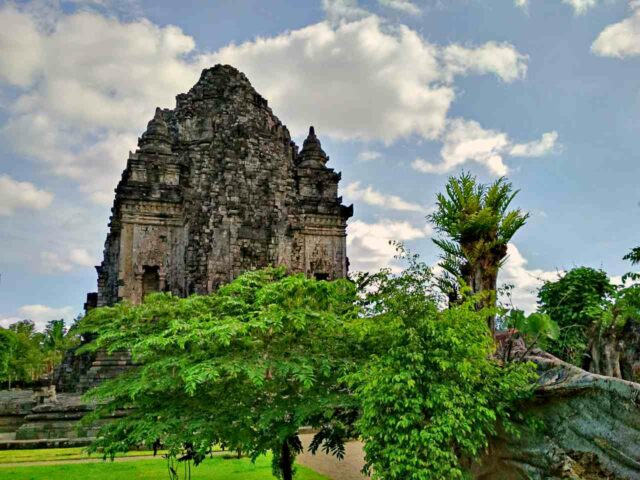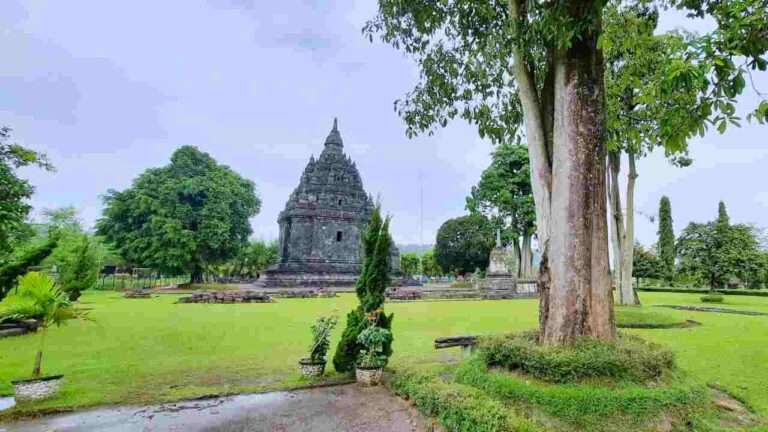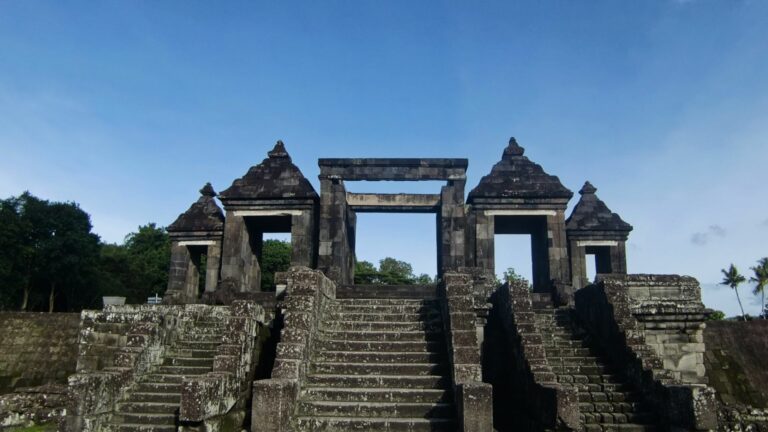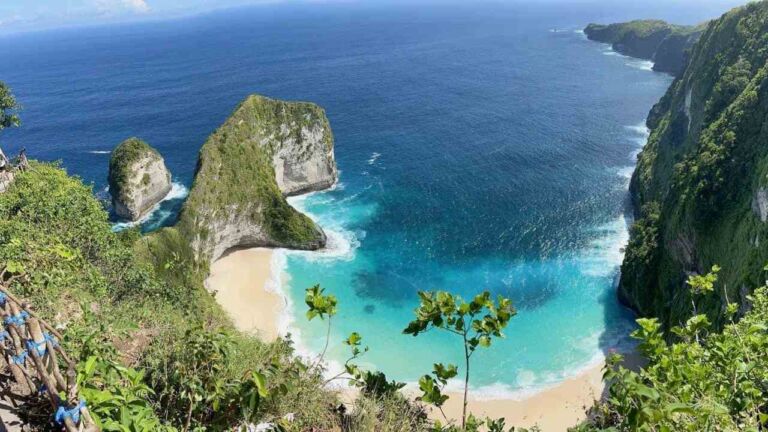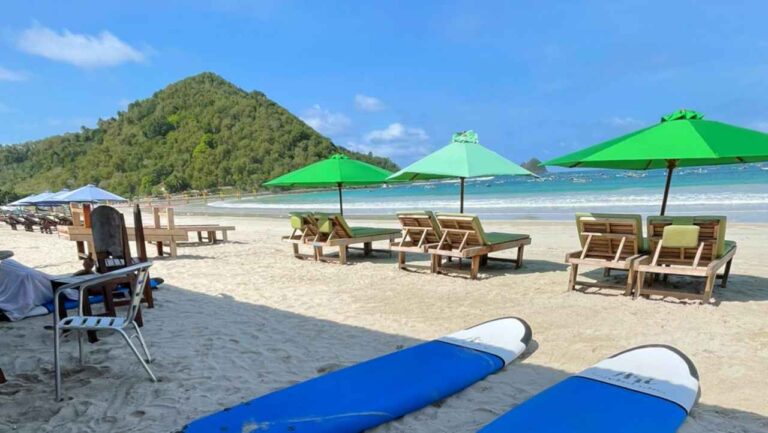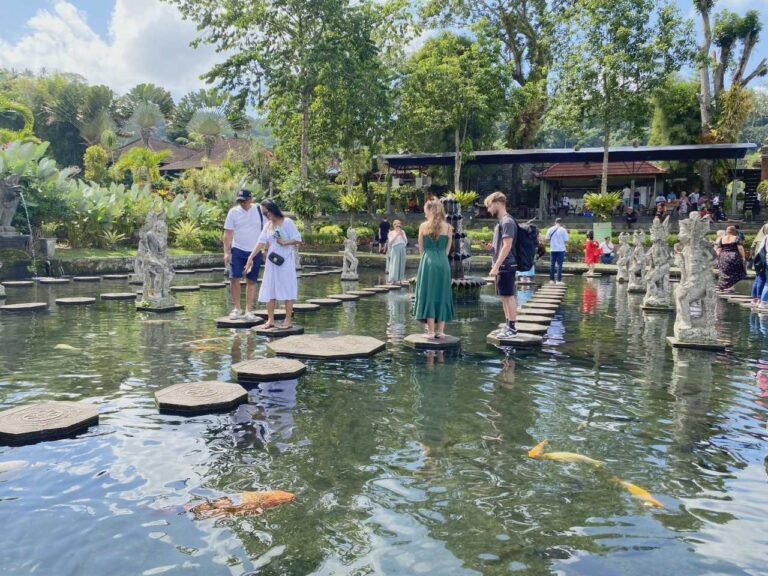Huge, stunning, holistic, and artful are words to describe the Kalasan temple. Built magnificently in Sleman, Yogyakarta, is one of the charms of the region. Kalasan is one of the old Buddhist temples on Java Island. The ancient Buddhist legacies have stood since the 8th century.
Kalasan temple lies on the south side of the Yogyakarta-Solo highway. The structure is a square base with 52 stupas with a unique cover layer. The layer structure is made with a mixture of egg white, plant sap, and fine lime. Unfortunately, as the temple gets old. The plaster didn’t hold the structure as strong as it used to.
Stupas at the top of the temple will immediately remind people of Borobudur. Despite in here, it’s much smaller. Some of the top structures are partially broken in corners. Back then, there is even a 6-meter bronze statue. Portraying the majestic era and wealth of the kingdom. The temple’s chambers at the top are also empty. And sadly, there is no literature unfolding this story.

Kalasan Temple Entrance Fee
Unlike the prominent temple in Java such as Prambanan and Borobudur temples. International tourists only have to pay a small fee for the entrance ticket, Rp15.000 per person. A parking area is available on the premises with no additional fee.
| Kalasan Temple Entrance Fee | |
| International tourists | Rp15.000 |
See: Ratu Boko Palace, Sunset Spot & Attraction.
Kalasan Temple Opening Hours
Kalasan temple is open from 8 AM to 5 PM. The best time to visit the temple is after 3 PM. For tourists heading to Prambanan and Ratu Boko Palace, it’s best to go to Kalasan temple first. Since Prambanan bus shelter is the last bus stop and there actually a shuttle van heading to Ratu Boko Palace.
| Kalasan Temple Opening Hours | |
| Every day | 08:00 – 17:00 |
See: Prambanan Temple, Attraction & Ramayana Ballet Show.
Kalasan A Dedication To A Goddess
Unlike the Prambanan temple, a sacred place to worship 3 gods. Kalasan is specifically dedicated to just 1 Buddhist Goddess, Tara. As a prominent female figure in Buddhism. Tara is known as the mother of all Buddhists. She represents the freedom, success, and holiness achievement of a person’s soul.
In light of history, the temple speaks of the king of Mataram’s loyalty and faithfulness to his people. During his reign, both Hindu and Buddhist temple was built. The major and most recognizable one is Prambanan. The biggest structure of Hindu trace.
On the other hand, Kalasan temple, the Buddhist trail adds another mark of the existence of Sriwijayan power and authority in Central Java. Rakai Panangkaran was a true and loyal Hindu. But, he is a wise king for his people regardless of their religion.
At this point, Kalasan Temple is proof of his dedication and devotion to his people and tolerance of the Buddhists. As a result, the Kalasan temple does not simply have Buddhist ornaments. The Hindu’s character is pretty obvious in a few corners of the temple.
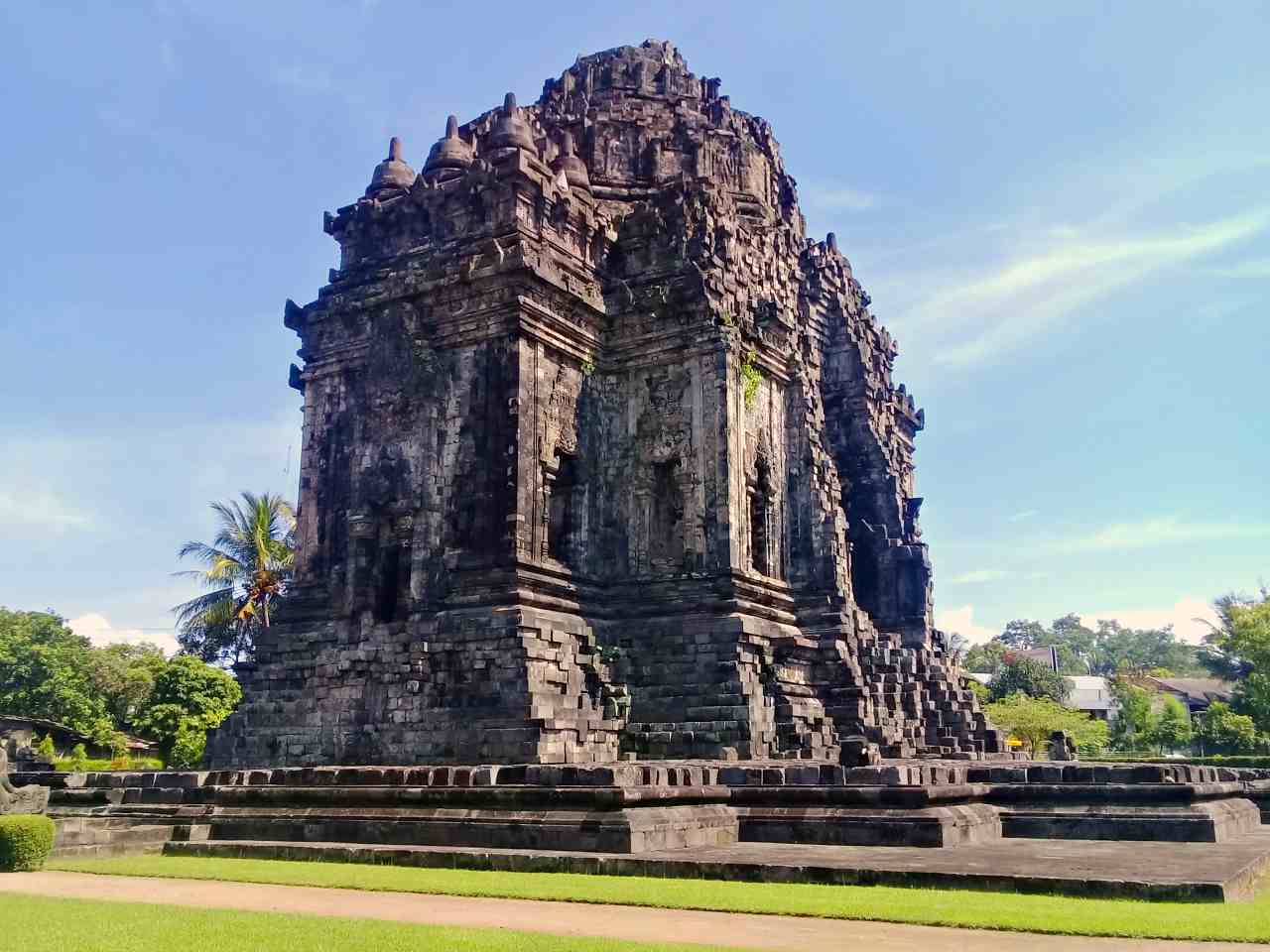
The Demon Statue
Although the structure of the Kalasan temple is no longer solid. It has yet to lose its beauty. In the south part of the temple, two Bodhisattva reliefs are hard not to notice. Representing a pictorial of a Buddhist-to-be person. Kalasan has the same character as any Buddhist temple, including Borobudur.
Along with the two Bodhisattva reliefs, a huge Banaspati stands in the south. The statue is quite tall and huge. In Buddhism, Banaspati is the dark demon that looks like a fire – and the devil with fire as his main power.
Unlike the common Banaspati statues, the figure in Kalasan is different. Here, Banaspati has a mix of Buddhist-Javanese characters, including the tendrils. At the top of the temple, a Buddhist statue Gana adorns the space. Gana’s name may sound unfamiliar to a non-Buddhist. But will be familiar once seeing a bloated man statue carrying a bunch of things.
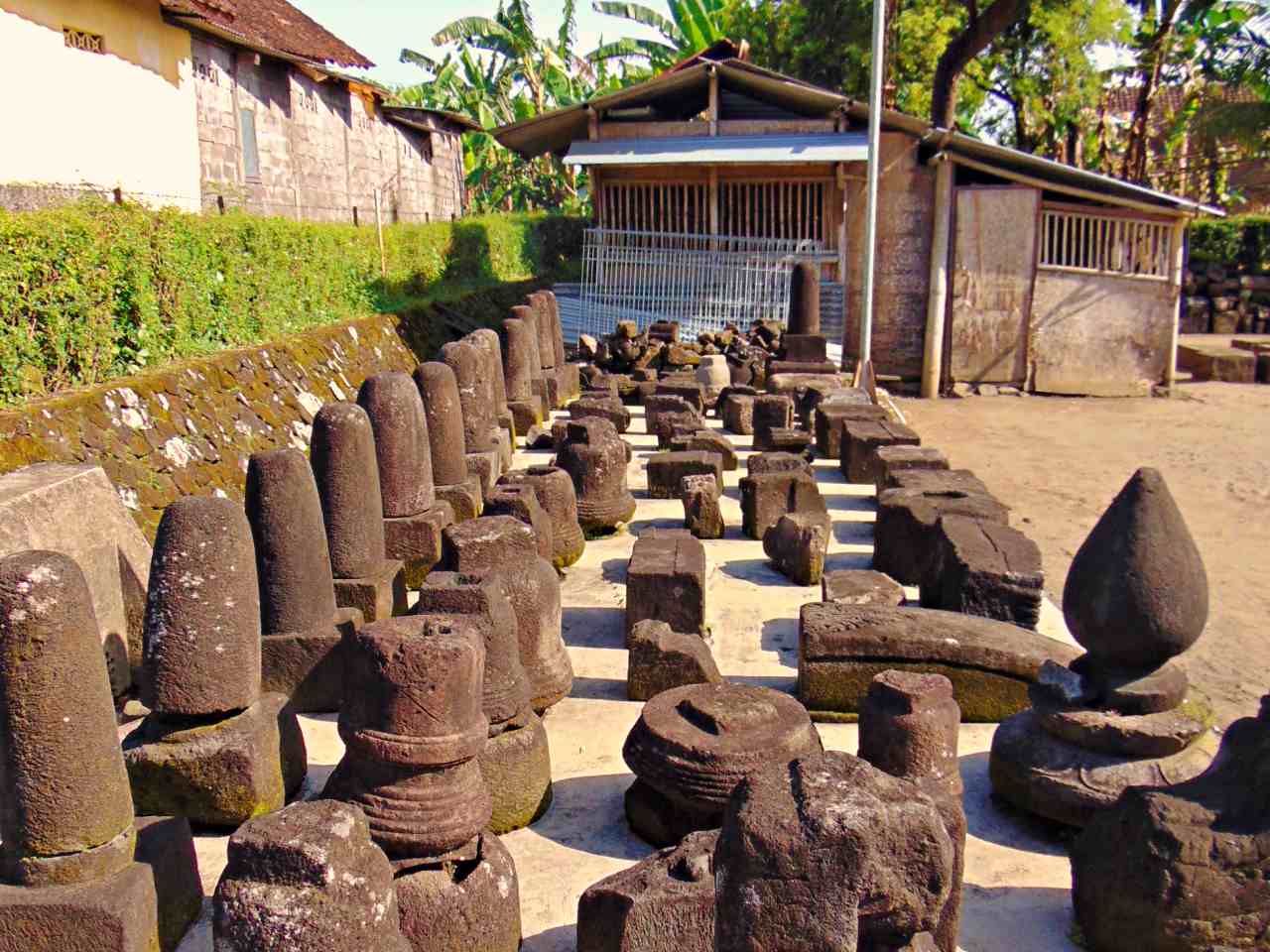
Hindu & Buddhist Carvings
In Buddhism, Gana is a figure of attendants. Its name is taken from Sanskrit which partly means troop. A statue of God holding lotus flowers lies in the outer corner of the temple. In Buddhist belief, a lotus represents the cause and effect of life principles. It’s a straight warning for people to be thoughtful of their actions. Keep doing good things so they have better luck in future life.
Aside from the top part, a Kalamakara statue sits as a doorway on one side. Like the other statues, Kalamakara holds a deep philosophy in Hinduism. The statue is carved and shapes a monstrous face with snake-like bodies. It speaks for one’s purification to God. Right below the statue, a cross-legged female decoration adds a strong meaning.
Aside from its philosophical meaning. An image of Kumuda decorates the bottom walls. A pictorial of Kalpataru leaves that rambles out of a jar. In Buddhism, Kumuda means a wishing tree and a tree of life. It symbolizes the concept of three-stage of the world a person will experience.

Interiors
The statues are not the only splendid thing. Inside the temple, guests will get to see the intense structure. A bunch of piles of stones was placed and arranged in such a way tied to one another. It’s remarkable how ancient construction manages to create strong lasting centuries of structures.
The open octagonal roof gives a peek at the sky. The light that comes through the roof gives little shines to its chambers. The sunlight sometimes touches the sculptures of Dhyani Buddha or the Five Tathagatas. A Buddhist sculpture that speaks for five qualities of the Primordial Buddha, the highest stage of all.
Moving to the main room, a throne settles in the center. This space is adorned with particular carvings. What makes it more interesting is that it is placed on the back of an elephant statue. It holds a strong Buddhist philosophy. Since an elephant is a representation of Queen Maya. The birth mother of Gautama Budha.
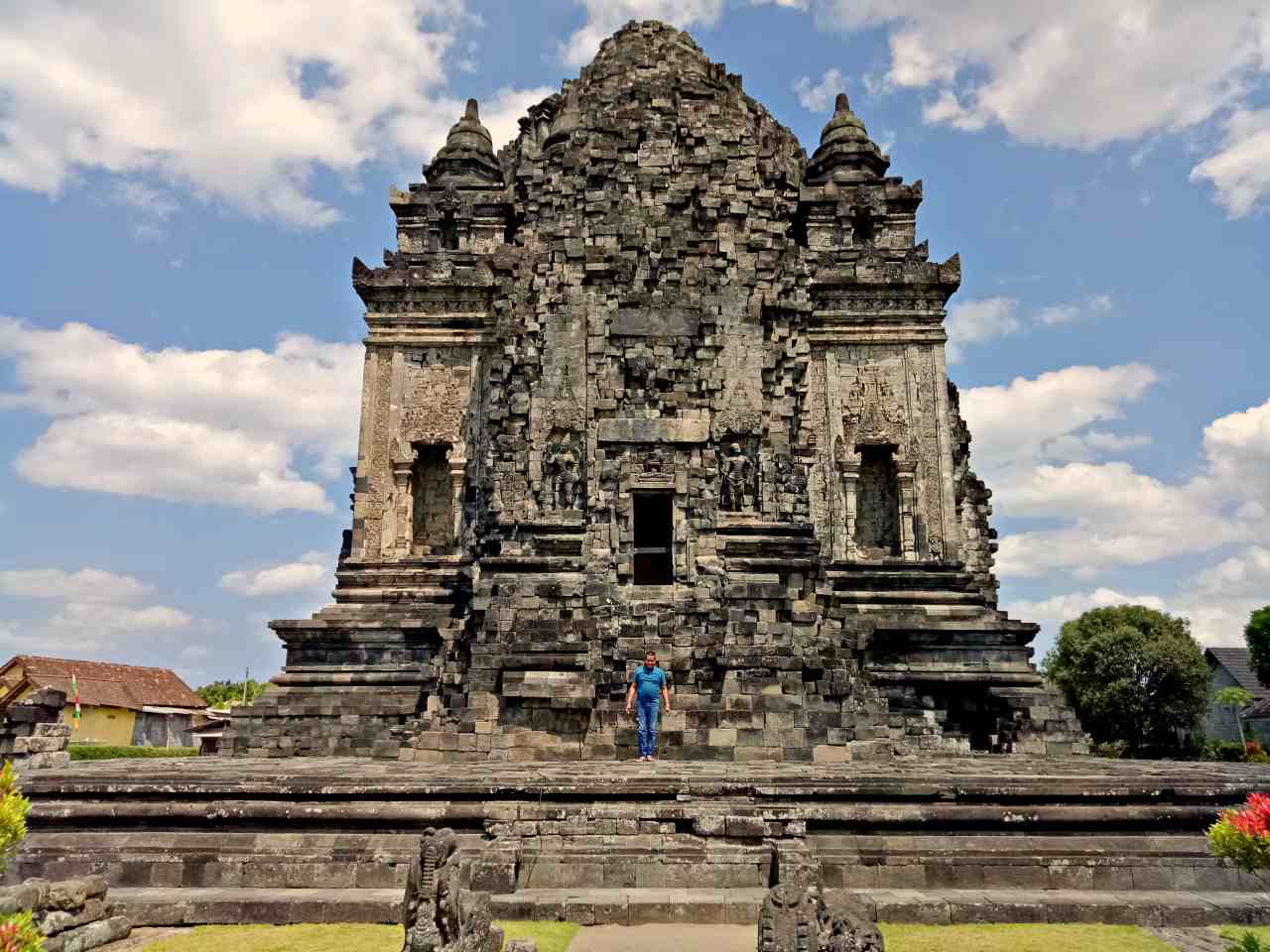
Kalasan Temple Renovation
As the temple aged, it lost a huge part of its structure. The stone bricks are no longer solid and crumble in some parts. The Indonesian government has been doing a renovation job for a while. Especially on the top part. The renovation affects much on tourism activities.
Since 2015, the local government has warned visitors not to come too close. The stone bricks are fragile and anytime can easily be falling apart. Therefore, it is quite dangerous for tourists to come inside. Seeing the temple from the outside is strongly suggested until the renovation ends— in 2019.
See: Guide To Explore Beringharjo Market, Products & Handicrafts.
Facilities
The temple has yet to have well-developed facilities due to the big renovation. Toilets are placed in a corner of the area. A large parking area is available in the front. Lastly, a guide is ready to welcome and accompany the guests from the entrance.
See: Indonesian SIM Card, Price & Coverage
How To Get To Kalasan Temple
Kalasan temple is 13 kilometers away from the Prambanan temple complex. To reach the temple, tourists can follow the Solo-Yogyakarta main road. The temple is located right on the south side of the main road. Besides going in a private vehicle. Tourists could opt for public transportation.
First, from any tourist area in Yogyakarta downtown such as Malioboro and Tugu train station. Catch Trans Jogja line 1 A, it’s the same line that heads to Prambanan temple. The bus fare is cheap Rp3.500 or around $0.25 for a one-way trip. Passengers could pay the bus fare with cash or using an electronic money card. From downtown, the journey will take around 1 hour since the bus stop at several bus shelters.
At this point, ask the driver to stop at TJ Solo Kalasan bus shelter. And from the bus shelter, it takes a 5-minute walk to get to Kalasan temple.
See: Yogyakarta International Airport & Public Transportation Guide.
Address & Location
Kalasan Temple location is in Jl. Raya Yogya – Solo, Danurejan, Special Region Yogyakarta 55571.

